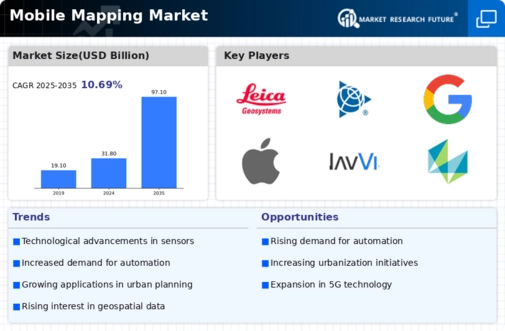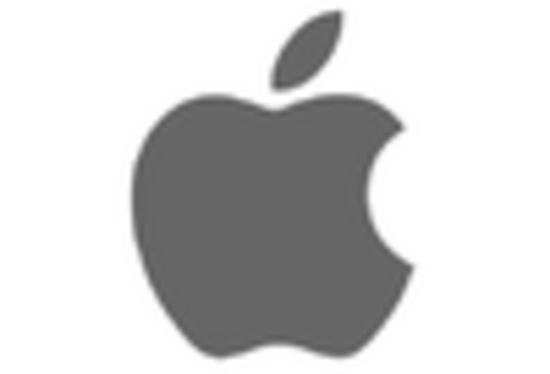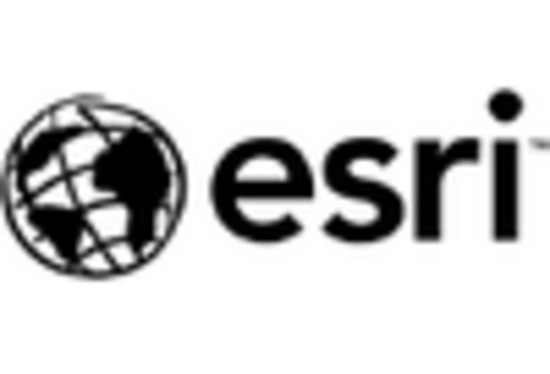Market Share
Mobile Mapping Market Share Analysis
The mobile mapping market is shaped by several key factors that drive its growth and evolution. One significant factor is the increasing demand for location-based services and applications across various industries. With the widespread adoption of smartphones and connected devices, consumers and businesses alike rely on mobile mapping technologies to access real-time location data, navigation services, and location-based information such as nearby businesses, points of interest, and traffic conditions. This growing demand for mobile mapping solutions fuels innovation and drives investment in technologies such as GPS, LiDAR, and augmented reality (AR) to enhance the accuracy, coverage, and usability of mobile mapping applications.
Technological advancements also play a crucial role in shaping the mobile mapping market. The convergence of mobile computing, sensor technologies, and geospatial analytics has led to the development of advanced mobile mapping platforms capable of capturing, processing, and analyzing geospatial data in real-time. Mobile mapping solutions leverage a combination of GPS, inertial navigation systems (INS), and advanced sensors such as LiDAR, cameras, and radar to collect high-resolution 3D imagery and generate detailed maps of the surrounding environment. Additionally, the integration of machine learning (ML) and artificial intelligence (AI) enables automated feature extraction, object recognition, and semantic segmentation, enhancing the accuracy and efficiency of mobile mapping workflows.
Another market factor driving the growth of the mobile mapping market is the increasing adoption of autonomous vehicles and smart transportation systems. Mobile mapping technologies play a crucial role in enabling autonomous vehicles to navigate safely and efficiently by providing accurate localization and mapping capabilities. Mobile mapping solutions are used to create high-definition maps of roadways, infrastructure, and traffic conditions, enabling autonomous vehicles to perceive and understand their surroundings in real-time. Additionally, mobile mapping data is utilized to optimize route planning, traffic management, and infrastructure maintenance, leading to safer and more efficient transportation systems.
Furthermore, the proliferation of mobile mapping applications in industries such as construction, agriculture, utilities, and logistics contributes to market growth. Mobile mapping solutions are used to survey and map construction sites, monitor crop health, manage utility networks, and optimize logistics operations. By providing accurate geospatial data and real-time insights, mobile mapping technologies enable businesses to improve productivity, reduce costs, and make informed decisions. Additionally, the integration of mobile mapping with other technologies such as drones, robotics, and IoT sensors expands the capabilities and applications of mobile mapping solutions across various industries.
Market competition also drives innovation and evolution in the mobile mapping market. With the emergence of new players and startups offering innovative mobile mapping solutions, competition intensifies, prompting vendors to differentiate themselves through advanced features, usability, and integration capabilities. Additionally, strategic partnerships and collaborations between mobile mapping vendors, technology providers, and industry stakeholders enable interoperability and facilitate the development of integrated solutions tailored to specific use cases and industry verticals.
Moreover, regulatory initiatives and government investments in infrastructure modernization and smart city development drive the adoption of mobile mapping solutions. Governments and regulatory bodies worldwide recognize the importance of accurate geospatial data and mapping technologies for urban planning, disaster management, and environmental monitoring. Mobile mapping solutions are utilized to create digital twins of cities, monitor infrastructure assets, and analyze spatial data to improve urban mobility, public safety, and environmental sustainability. Additionally, government funding and incentives for research and development initiatives in mobile mapping technologies stimulate innovation and fuel market growth.
Economic factors such as cost-effectiveness and return on investment (ROI) also influence the adoption of mobile mapping solutions. Organizations seek cost-effective solutions that offer tangible benefits such as increased productivity, improved decision-making, and competitive advantage. Cloud-based mobile mapping platforms, offered on a subscription or pay-as-you-go basis, provide scalability, flexibility, and cost savings compared to traditional on-premises solutions. Additionally, vendors offering value-added services such as data analytics, visualization, and consulting gain a competitive edge in the market.

















Leave a Comment